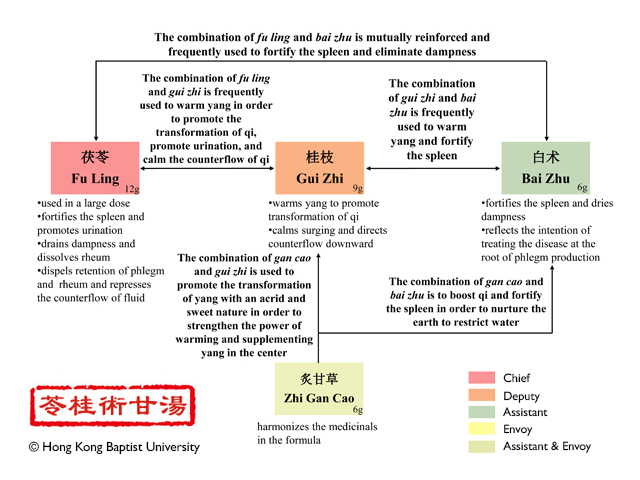
| Chief | Fu Ling |
| The combination of gui zhi and bai zhu is frequently used to warm yang and fortify the spleen. The combination of fu ling and bai zhu is mutually reinforced and frequently used to fortify the spleen and eliminate dampness. |
| Deputy | Gui Zhi |
| The combination of gui zhi and bai zhu is frequently used to warm yang and fortify the spleen. The combination of fu ling and bai zhu is mutually reinforced and frequently used to fortify the spleen and eliminate dampness. |
| Assistant | Bai Zhu |
| The combination of gui zhi and bai zhu is frequently used to warm yang and fortify the spleen. The combination of fu ling and bai zhu is mutually reinforced and frequently used to fortify the spleen and eliminate dampness. |
| Assistant&Envoy | Zhi Gan Cao |
| The combination of gan cao and bai zhu is to boost qi and fortify the spleen in order to nurture the earth to restrict water. |